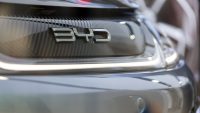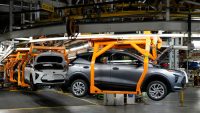 BCA recently published their highly researched Used Car Market Report 2010 which pointed out that the vehicle parc is ageing due to many years of successively lower new car volumes than the peak in 2004.
BCA recently published their highly researched Used Car Market Report 2010 which pointed out that the vehicle parc is ageing due to many years of successively lower new car volumes than the peak in 2004.
Less new car sales and a subsequent decrease in vehicles less than five years old mean the franchise dealers’ traditional service hunting ground is shrinking. Furthermore, cars are becoming more reliable and have longer service intervals so the market dynamic is shifting to older vehicles.
It is not going to kill the service business – Google actually report a 15-20 per cent increase in service-related searches since 2004 – but it’s making things harder.
With the dealer franchise market consolidating and fewer, larger groups, leveraging their size, margins will be squeezed. Such shifts in the market mean dealers need to make more of every element of their business and also react specifically to the shift in the service profile over the coming years.
Dealers must also be mindful of how the mega brands like Amazon and Tesco are forcing car dealers to make changes to the way they do business. While this may not be appreciated by many motor retailers right now, the influence imposed by these companies is changing the way consumers interact with suppliers especially in the digital space.
One dealership that has already recognised the need to focus on their service business and use technology to improve their interaction with customers is Wessex Garages. Keith Brock, managing director, said: ‘We are focused on the sale of service plans, exceptional levels of customer satisfaction and retention.’
To confirm the importance of the internet to his service business, Brock added: ‘Our service department generates more bookings from the website which in turn has reduced the burden on our phone lines. By giving customers the opportunity to use online service scheduling on the website they can book when it’s convenient for them rather than having to call us during normal working hours. Tools such as live chat, SMS and email have had a very positive impact.’
There are a few tools in the digital space to help dealers bolster their service marketing to bring back these lost customers including vehicle inspections, online servicing scheduling and cross selling to help reclaim what they have lost and increase absorption rate.
This move toward pragmatism and improved customer service is the bedrock that will help dealerships flourish into the next economic boom. Top performing dealers are utilising such forms of automated communications via email, text and calls to attract more customers to their service lane.
Those dealers who have more than 80 per cent service retention tie their customers to them with more reasons to service with them immediately after purchase so they can establish a habit. Another leading motor retailer, Lifestyle Europe, have integrated a successful aftersales section on their website, allowing customers to not only book a service directly online, but have the option to amend servicing requirements and add extras to create a bespoke service.
Therefore with an average of only 20 per cent of dealership customers returning for a service, we question why and how dealers are missing out on this 80 per cent margin when it costs 10 times as much to capture a new customer than it does to retain a current one.
































